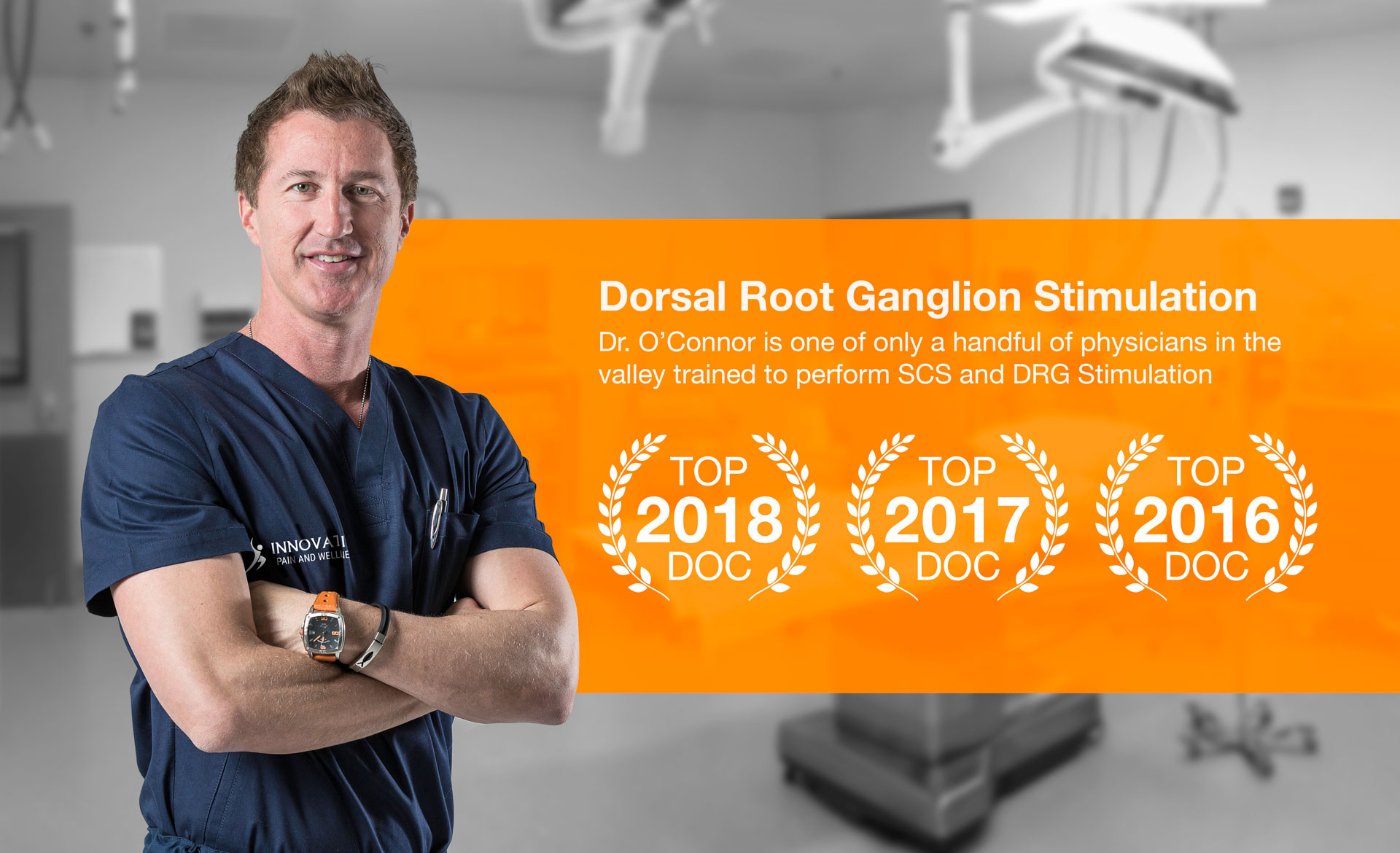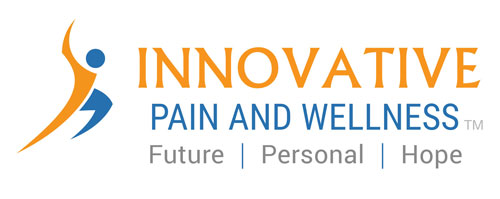
Dorsal Root Ganglion Stimulation
Spinal Cord and Dorsal Root Ganglion Stimulation
Spinal Cord Stimulation (SCS) and Dorsal Root Ganglion Stimulation (DRG) are on the cutting edge of pain management technology. SCS and DRG provide chronic pain relief for patients who have not found relief through other medical procedures.
What is Spinal Cord Stimulation?
Doctors have been using SCS to treat pain for over 40 years successfully. The technological advances of SCS have revolutionized the treatment of pain caused by damaged nerves.
How Spinal Cord Stimulation Works
SCS works like a heart pacemaker. While a pacemaker regulates your heartbeat, an SCS interrupts, or masks, pain signals to your brain.
The SCS consists of wires and a pulse generator. The wires are surgically placed in the epidural space of your spinal cord. The pulse generator is placed in your buttocks or abdomen. The wires deliver very low-level electrical pulses to the spinal cord. The electrical pulses interrupt or mask the pain signals to your brain. Instead of your typical pain, you may feel mild pain or a gentle massage-like feeling.
The SCS requires a minimally-invasive surgical procedure and is completely reversible if necessary. The pulse generator requires a battery, so future surgeries to replace the battery will be needed.
Is Spinal Cord Stimulation Right for You?
Your IPW provider may recommend SCS if you
- have had at least six months of chronic pain in the back, neck, arms, or legs
- are experiencing neuropathic pain
- have not received enough relief from other treatment options
Advances in spinal cord stimulation technology led to the development of a new treatment called Dorsal Root Ganglion Stimulation (DRG).
What is Dorsal Root Ganglion Stimulation?
DRG is like SCS, but the wires are placed in dorsal root ganglion, rather than the spine. DRG Stimulation is especially helpful at providing targeted pain relief in the legs and feet.
The dorsal root ganglion is a cluster of neurons at the base of the spinal cord that helps send pain and other sensory information to the brain. All sensory signals entering the spinal cord must pass through the dorsal root ganglion.
How Dorsal Root Ganglion Stimulation Works
The DRG consists of up to four wires and a pulse generator. The wires are placed near the target treatment area in the dorsal root ganglion and attached to the pulse generator, which is placed under the skin in the buttocks or flank.
The wires send very small electrical impulses to the treatment area, thereby blocking pain signals to the brain.
The DRG requires a minimally-invasive surgical procedure, which can be removed if needed. The pulse generator requires a battery, so future surgeries to replace the battery will be needed.
Implantation Process
A temporary implant is done to allow you to test the amount of pain relief you have before permanent implantation. The temporary implant allows you to try out the SCS or DRG and decide if it works for you.
If you and your doctor decide that an SCS or DRG Stimulator is the right treatment for you, the procedure to place the temporary stimulator can take place at the surgery center.
Temporary Implantation
During the procedure, a local anesthetic is used to numb the procedure site. You will also be given intravenous sedation by a certified anesthesia provider.
Using x-ray guidance, your doctor will insert the wires into your back with a small needle. Once the wires are positioned, your doctor will connect them to the external pulse generator.
The generator is kept outside of your body during the trial period.
The stimulator includes an external controller, which allows you to regulate how the stimulation feels.
The procedure typically takes about 20 to 30 minutes. You should feel significant pain relief soon after stimulator is in place.
Permanent Implantation
If the stimulator reduces your pain during the trial period, the wires and pulse generator will be permanently implanted. Permanent implantation will also take place at the surgery center.
If needed, the wires will be adjusted to provide optimal pain relief during the procedure. The pulse generator is implanted in the abdomen or buttocks.
The stimulator can be removed later if necessary.
Life after SCS or DRG Stimulation
Studies of spinal cord stimulation have shown that the majority of patients had significant pain relief. Similar studies of dorsal root ganglion stimulation have shown that an even higher percent of patients had significant pain relief, for focal pain.
Patients report that their pain was reduced by at least half, while many report a pain reduction of over 80 percent.
By providing significant pain relief, SCS and DRG enable many patients to increase their activity levels and improve their overall quality of life.
Depending on your level of pain relief, SCS or DRG may allow you to reduce or stop taking pain medication.
Innovative Pain and Wellness Can Help
If your pain interferes with your daily life, the team at Innovative Pain and Wellness encourages you to call us.
Living with pain can be exhausting, and we want to help. We see all new patients within a week of scheduling an appointment at one of our clinics.
During your first appointment, your provider will talk to you about your pain, the potential causes, and make a treatment plan specific to you. Your treatment plan may include a combination of medications, wellness-based treatments, physical therapy and chiropractic care, and cutting-edge procedures such as SCS or DRG Stimulation.
Innovative Pain and Wellness accepts most major insurance plans, and our intake process is fast and easy. Simply download the New Patient Intake forms and bring them to your appointment.
Don’t wait to get expert pain management treatment for your chronic pain! The Innovative Pain and Wellness team is ready to help. Call us today at (480) 771-2136, and see us in less than a week!
- Chronic pain affects 100 million Americans, more than heart disease, cancer, and diabetes combined.
- Back pain is cause for 40 percent of work absences, second only to the common cold.
- Chronic pain costs the nation more than $635 billion each year in medical treatment and lost productivity expenses.





